Having a single version of the true financial performance reporting is one of the important if not the most important requirement when it comes to delivering capital construction projects. This single version of the truth reporting cannot be achieved if the required cost data are captured and stored in different data silos, or simply being not connected. On the other hand, the credibility of what is being reported depends on the trustworthiness and validity of the captured cost data. Readers of the financial performance reports need to be able to trace the source of shared cost data when needed.
Using a Project Management Information System (PMIS) like PMWeb all cost management business processes required to deliver capital construction projects are readily available out of the box. Those include the modules needed for estimating the cost, procurement of bid packages, managing the project budget and commitments, change management, progress, and miscellaneous invoices, and others. All those cost management requirements are connected to provide a real-time single version of the truth of the project’s financial performance.
In addition, with the growing use of Building Information Modeling (BIM), the recipients of the financial performance reports can now have better visualization of the scope of work being reported on. This can be easily achieved when the project cost data is associated with the objects included in the BIM model. These BIM objects are the basis for quantifying the scope of work that becomes the basis for creating the cost estimate record in PMWeb. In turn, the approved cost estimate helps generate the project’s performance budget and online bid packages for which contracts are awarded, changes managed and payment for approved invoices made.The BIM Enabled Connected Cost report below created in MS Power BI extracts the cost data and BIM objects from PMWeb which is then associated with the BIM model visual developed by KG-DEV called 3DBI. This allows the project stakeholders to better visualize, investigate and analyze the project’s connected cost using the BIM model.
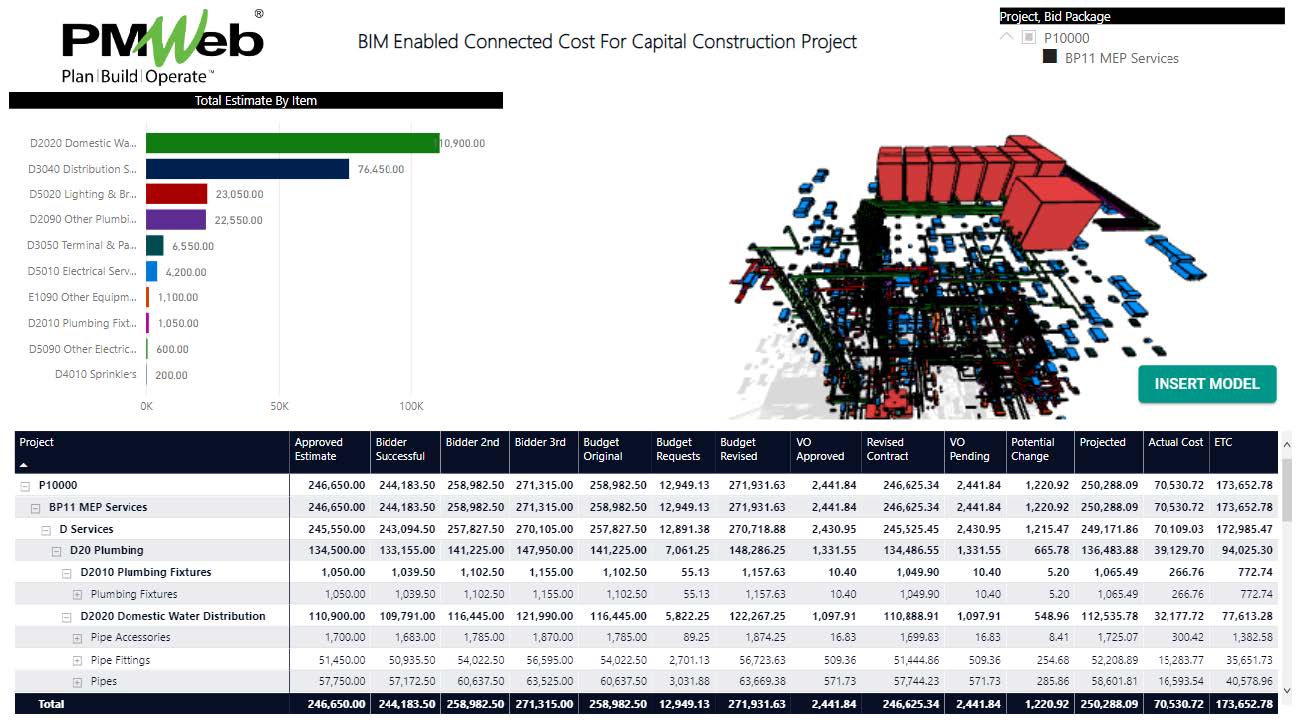
This data association enables creating a report that details each project or asset into the bid packages for the outsourced project’s scope work. Each bid package (BP11 MEP Services) is further detailed into the cost breakdown structure (CBS) levels where the cost can be controlled at. For example, assuming that the CBS was based on the UniFormat™, then three levels can be created for major group elements (D Services), group elements (D20 HVAC), and individual elements (D3040 Distribution Systems). Next, there are the cost items such as Duct Accessories, Ducts, etc. For each cost item, the BIM model objects associated with that cost item is linked.
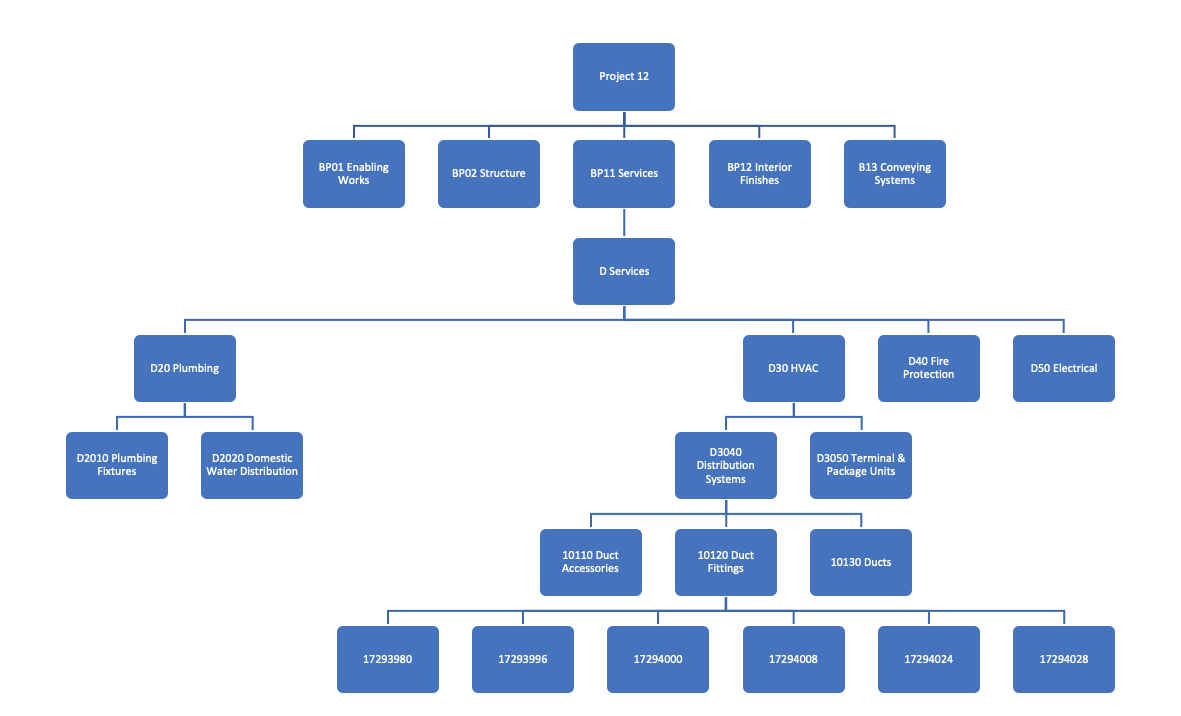
The report details the connected cost values extracted from the different PMWeb business processes which could include estimated quantity, unit of measure, unit price, estimated total cost, bidders’ quotes, baseline budget, budget adjustments, revised budget, awarded contract, approved changes, revised contract, pending changes, potential changes, projected contract at completion, actual invoiced and estimate to complete.
The connected-cost chart below displays the cost, procurement, and contract management business processes that are managed in PMWeb to achieve the required single version of the true financial performance reporting. The first group of processes is those associated with the cost estimate processes (light blue) which ensure that the project cost is valid and realistic. The budget management processes (burgundy) are the processes needed to ensure that there is an approved budget for the project and all changes to the budget are managed. The funding management processes (light orange) are needed to manage the availability of funds to deliver the project.
As an option, the contract procurement management processes (light green) can also be added to ensure that the qualified bidders are selected to deliver the project within the approved cost estimate. The contract management processes (yellow) are needed to manage the awarded commitments, potential changes, change orders, the value of actual work invoiced and actual payments made against what was invoices. PMWeb forecast process (green) is used to calculate and report on the earned value measures. Other processes (gray) for managing miscellaneous invoices, risk, schedule, resource requirements, and timesheets need to also be managed to achieve the required connected cost. In addition, other cost management processes that could be unique to each entity can be managed using PMWeb custom form builder (red). Finally, if project income or revenue (orange) is needed to be reported on, then this as well can be managed in PMWeb.
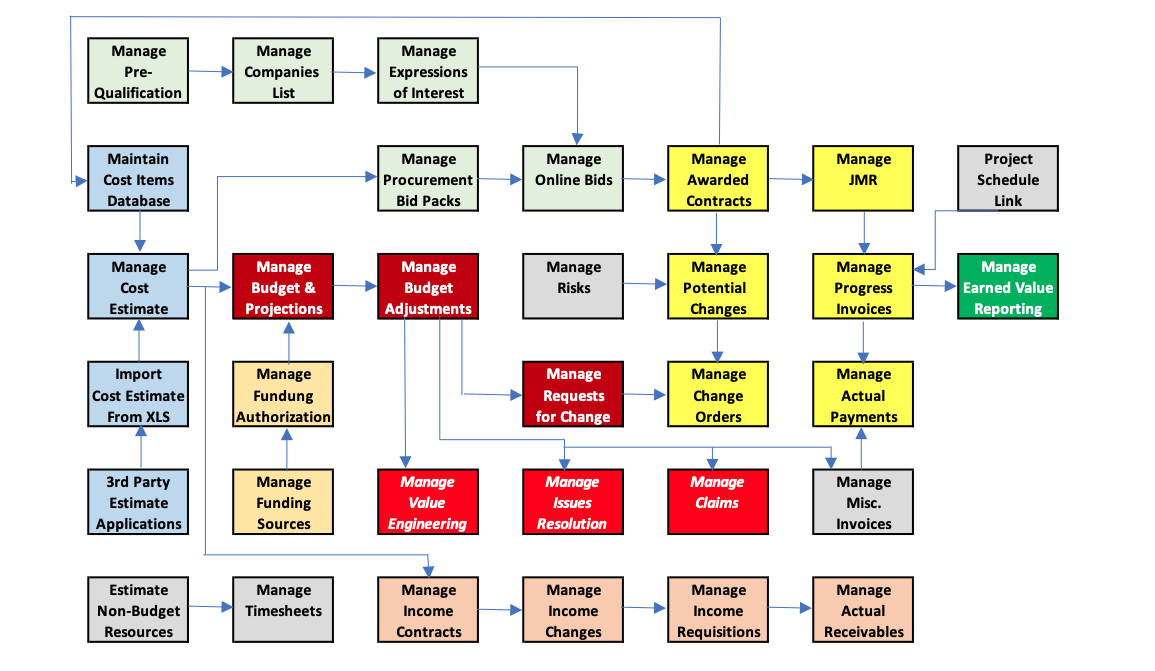
Nevertheless, it is very important that the project’s cost estimate which is the first business process required for the connected cost is set correctly. PMWeb cost estimate module helps capture the detailed cost estimate for which each line item includes the details for the cost breakdown structure (CBS) level, BIM object ID, material item ID, and procurement bid package name, and of course the unit price, unit of measure and quantity for each line item with the option to have those prices in multiple currencies within the same estimate record. In addition, each line item in the cost estimate record includes the work breakdown structure (WBS) levels and project schedule activity which becomes available in PMWeb using the schedule import function.The above cost estimate details can also be imported to the PMWeb cost estimate module using an MS Excel file. This enables the project team to import the exported BIM object ID and associated quantities from the BIM model as well as the cost estimate details in case it was done using a third-party dedicated cost estimating tool.
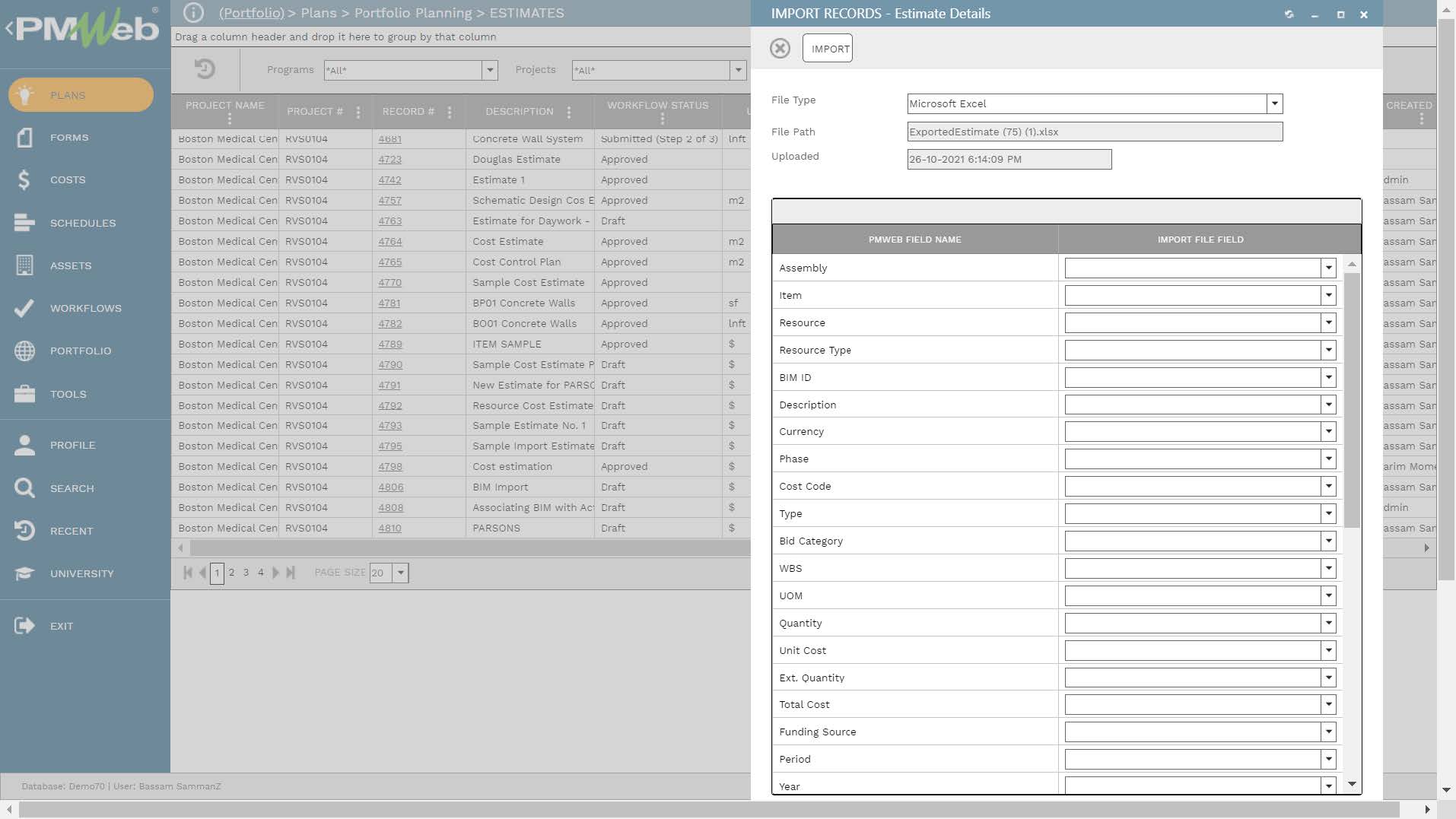
Similar to all business processes managed in PMWeb, the project team can attach all supportive documents to each cost, procurement, and contract management business process template. It is highly recommended to add details to each attached document to better explain to the reader what is being attached and viewed. In addition, links to other relevant transactions or records of other business processes managed in PMWeb can also be added.

It is also highly recommended that all those supportive documents, regardless of their type or source, get uploaded and stored on the PMWeb document management repository. PMWeb allows creating folders and subfolders to match the physical filing structure used to store hard copies of those documents. Permission rights can be set to those folders to restrict access to only those users who have access to do so. In addition, PMWeb users can subscribe to each folder so they can be notified when new documents are uploaded or downloaded.
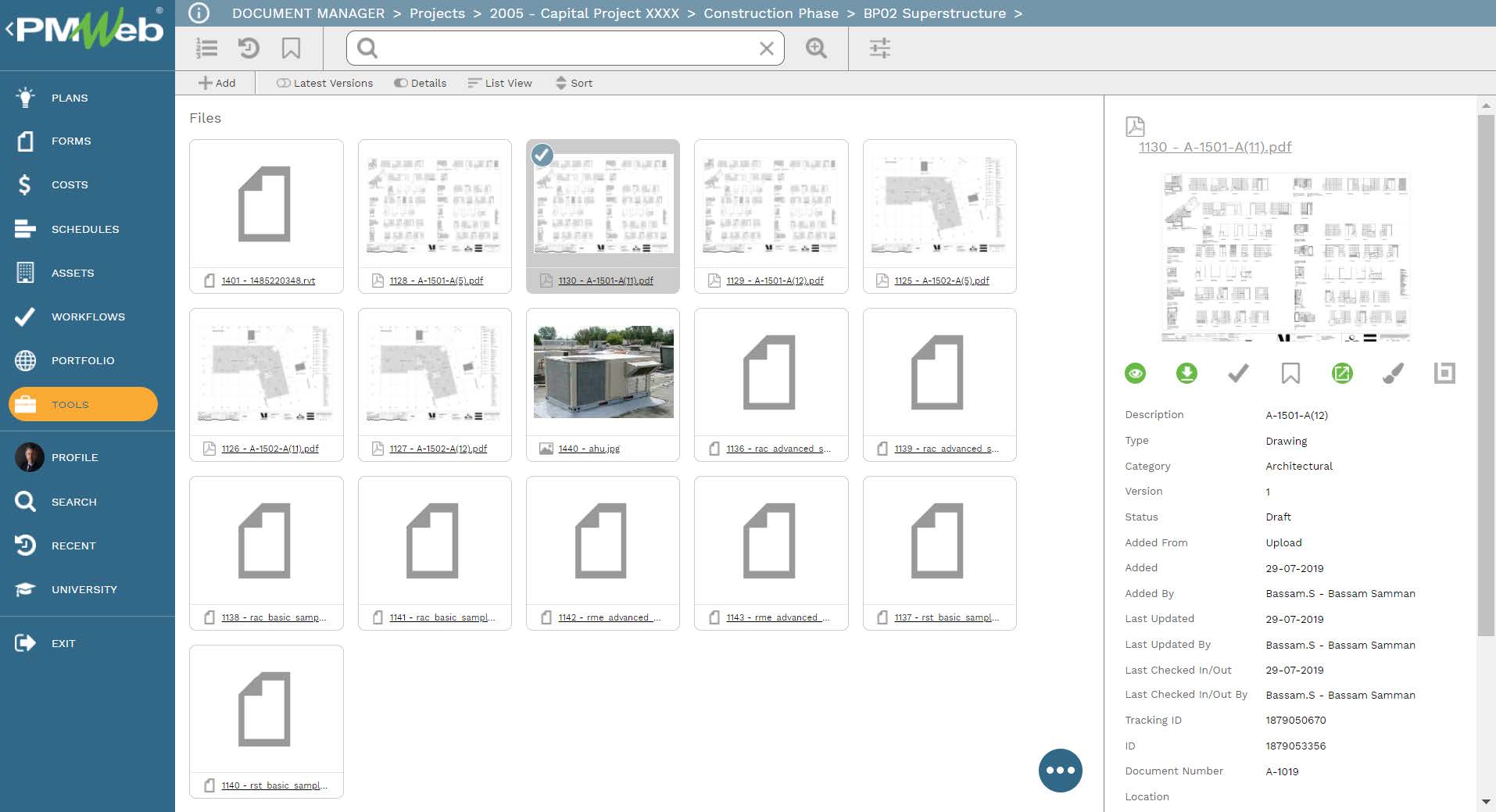
To enforce transparency and accountability in managing cost, procurement, and cost management business processes, a workflow needs to be added to each template to map the submit, review and approve tasks, role or roles assigned to each task, task duration, task type, and actions available for the task. The workflow can be configured to include the approval authority levels as set in the Delegation of Authority (DoA) document.
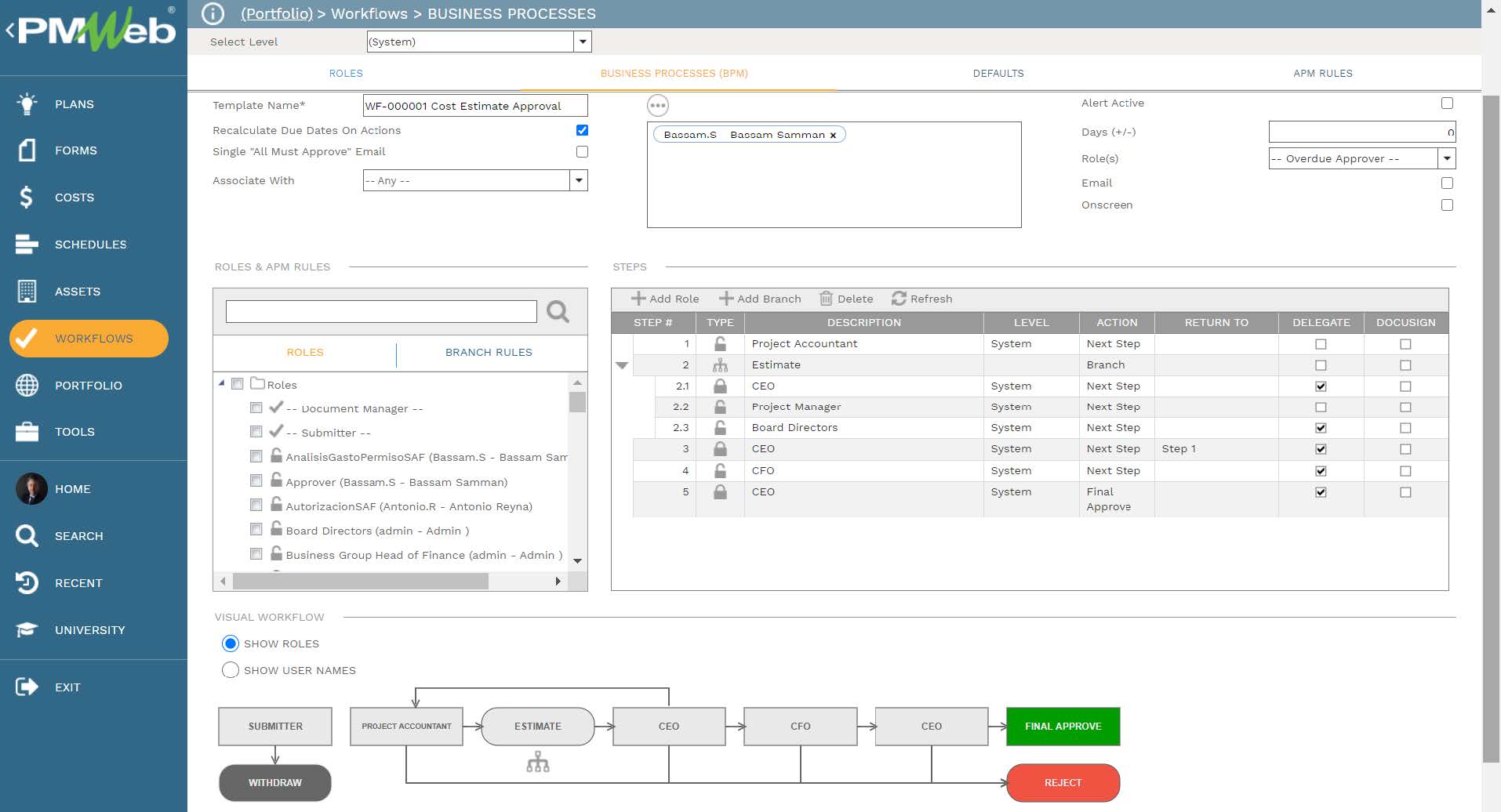
When any of the cost, procurement, or contract management business processes are submitted for review and approval, the workflow tab available on the relevant template captures the planned review and approve workflow tasks for each transaction as well as the actual history of those reviews and approval tasks. The captured workflow data includes the actual action data and time, done by who, action taken, comments made, and whether team input was requested.
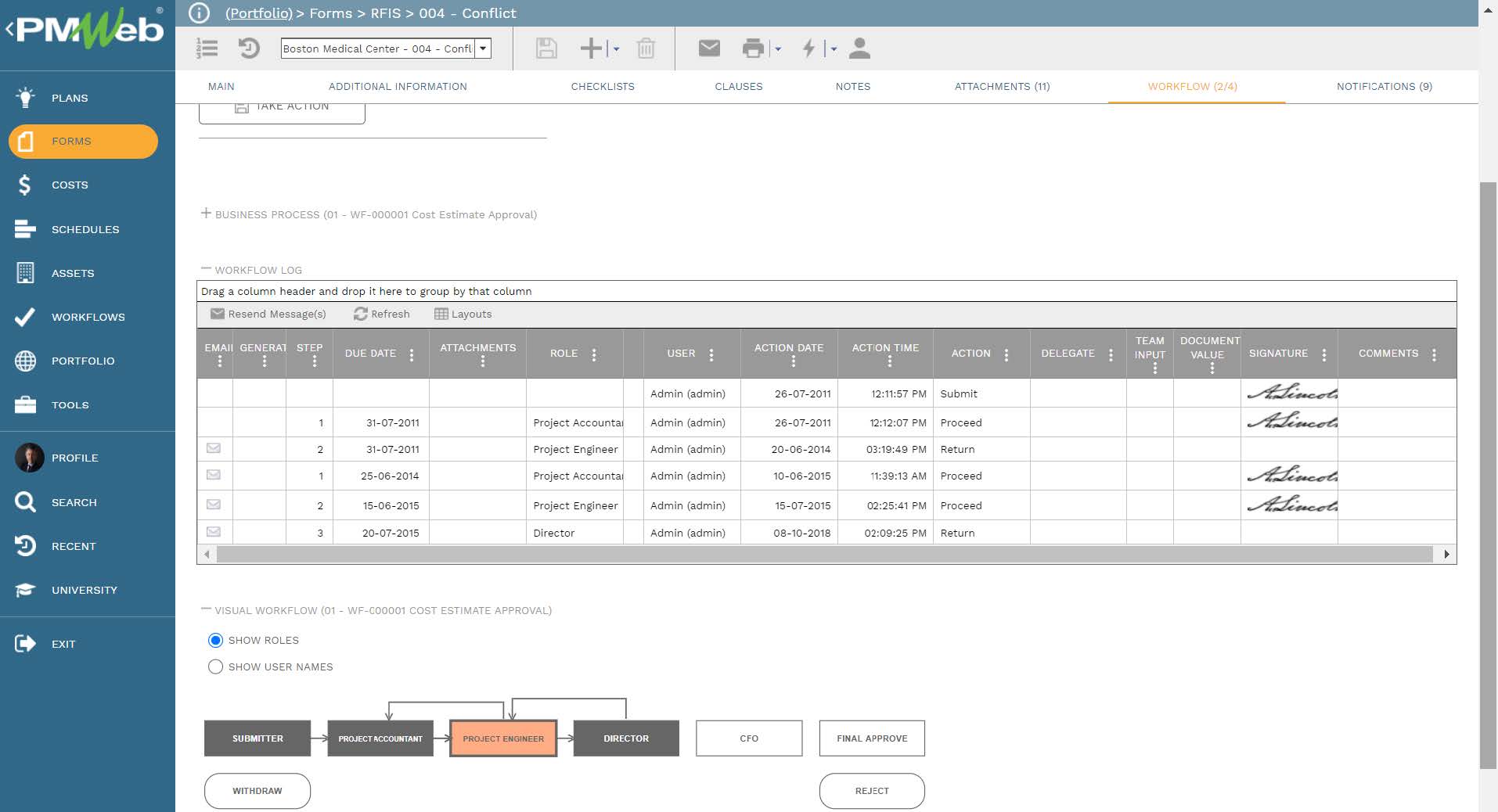
The interactive BIM Enabled Connected Cost report allows the project stakeholders to analyze and investigate the project’s connected cost for any selected project’s scope of work. Based on the selected scope of work, the BIM visual automatically adjusts the display to show only the BIM objects for the selected scope of work. Of course, this also applies to the bar chart visual and the connected cost matrix. The report reader can also rotate and zoom into the BIM model visual if there is a requirement to have better insight into the selected project’s scope of work.




